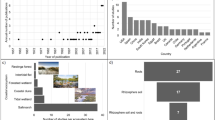Abstract
The Huanglong park area of the Sichuan Province of China is a unique scenic area of the world. It is known for its thousands of aquamarine-colored pools that are formed behind naturally formed rimstone dams of travertine (calcite) along a cold water stream. The travertine, based on its crystalline structural analysis, is of biological origin. This makes sense since the temperature of the waters of Huanglong varies from 5 to 7 °C and thus geochemical crystallization does not occur as it does in other locations around the world possessing thermal pools whose structures are primarily formed through cooling processes. Fungi and bacteria were discovered associated with both leaves associated with the calcite dams as well as in the older parts of well-established dams. Several species of Phytium, a phycomycete and an endophyte, accounted for over 45 % of all of the fungi successfully isolated from the well-established dam samples and at least 85 % in the floating leaf samples. Saprolegnia spp. (Phycomycetes) along with Phoma spp. (Ascomycetes) were noted along with Mortierella sp. as other dam-associated fungi. The fungal hyphae observed on dead leaf material as well as in the calcite dams directly served as nucleation points for the formation of crystalline CaCO3. Eventually, these crystals grow large enough to fuse to make calcite plates which form the main structural feature of all of the travertine dams in this area. Interestingly, each of the individual crystals associated with the dams has an associated hole in its core where a fungal hypha used to reside as observed by scanning electron microscopy. While diatoms were present in the analysis, they too seem to contribute to the structure of the dams but in a minor way. The only bacteria isolated from the older dam of this aquatic environment were Pseudomonas spp. and their role in dam formation is uncertain. Huanglong is a unique and beautiful place, and the water features present in this area can definitely be attributed to those fungal architects that encourage calcite crystal formation.





Similar content being viewed by others
References
Wang J, Liu S, Ran J, Wang C, Shen L, Jiang P, Guo G (2004) Effects of annual net primary productivity of forest ecosystem and habitat complexity on species diversity of small mammals. Acta Theriol Sin 24(4):298–303
Yoshimura K, Liu Z, Cao J, Yuan D, Inokura Y, Noto M (2004) Deep source CO2 in natural waters and its role in extensive tufa deposition in the Huanglong Ravines, Sichuan, China. Chem Geol 205:141–153
Sun S, Dong F, Ehrlich H, Zhao X, Liu M, Dai Q, Li Q, An D, Dong H (2014) Metabolic influence of psychrophilic diatoms on travertines at the Huanglong natural scenic district of China. Int J Environ Res Public Health 11:13084–13096
Li QF, Dong FQ, Dai QW, Hou TT, An DJ, Tang S (2012) The microbial factor of travertine deposition between Yellowstone National Park (YNP), USA and Huanglong Scenic, Sichuan. Adv Mater Res 518–523:136–139
Li Q, Csetenyi L, Gadd GM (2014) Biomineralization of metal carbonates by Neurospora crassa. Environ Sci Technol 48:14409–14416
Cao C, Jiang J, Sun H, Huang Y, Fand T, Lian B (2016) Carbonate mineral formation under the influence of limestone-colonizing actinobacteria: morphology and polymorphism. Front Microbiol 7:366. doi:10.3389/fmicb.2016.00366
Chahal N, Rajor A, Siddique R (2011) Calcium carbonate precipitation by different bacterial strains. Afr J Biotechnol 10(42):8359–8372
Kolo K, Keppens E, Préat A, Claeys P (2007) Experimental observations on fungal diagenesis of carbonate substrates. J Geophys Res 112:G01007. doi:10.1029/2006JG000203
Bindschedler S, Cailleau G, Verrecchia E (2016) Role of fungi in the biomineralization of calcite. Minerals 6(2):41. doi:10.3390/min6020041
John JB, Lonnie DR (1998) Electron microscopy. Jones and Bartlett Pub, Inc, Sudbury
White TJ, Bruns T, Lee S, Taylor J (1990) Amplification and direct sequencing of fungal ribosomal RNA genes for phylogenetics. In: Innis MA, Gelfand DH, Sninsky JJ, White TJ (eds) PCR protocols: a guide to methods and applications. Academic Press, Inc, San Diego, pp 315–322
Xie J, Strobel GA, Mends MT, Hilmer J, Nigg J, Geary B (2013) Collophora aceris, a novel antimycotic producing endophyte associated with Douglas Maple. Micorbial Ecol 66(4):784–795
Primieri S, Costa MD, Stroschein MRD, Stocco P, Santos JCP, Antunes PM (2016) Variability in symbiotic effectiveness of N2 fixing bacteria in Mimosa scabrella. Appl Soil Ecol 102:19–25
Wang H, Yan H, Liu Z (2014) Contrasts in variations of the carbon and oxygen isotopic composition of travertines formed in pools and a ramp stream at Huanglong Ravine, China: implications for paleoclimatic interpretations. Geochim Cosmochim Acta 125:34–48
McGinley M (2009) Huanglong national scenic area, China. The Encyclopedia of Earth online: http://www.eoearth.org/view/article/153576/
Huang B, Luo Y, Yu F, Tang S, Dong L, An D (2007) Interspecific relationships of dominant species in orchid communities of forest vegetation in Huanglong Valley, Sichuan, China. J Plant Ecol (Chinese version) 31(5):865–872
Van Den Berg AH, Mclaggan D, Dieguez-Uribeondo J, Van West P (2013) The impact of the water moulds Saprolegnia diclina and Saprolegnia parasitica on natural ecosystems and the aquaculture industry. Fungal Biol Rev 27:33–42
Deborah SF, Joseph H (2005) Calcineurin-binding protein Cbp1 directs the specificity of calcineurin-dependent hyphal elongation during mating. Eukaryot Cell 4(9):1526–1538
Stephenson KS, Gow NA, Davidson FA, Gadd GM (2013) Regulation of vectorial supply of vesicles to the hyphal tip determines thigmotropism in Neurospora crassa. Fungal Biol 118(3):287–294
Acknowledgments
The authors acknowledge the financial support of the Natural Science Foundation of Chongqing (cstc2015jcyjys80001) to Jie Xie.
Author information
Authors and Affiliations
Corresponding author
Rights and permissions
About this article
Cite this article
Xie, J., Strobel, G., Xu, WF. et al. Fungi as Architects of the Rimstone Dams in Huanglong, NSD, Sichuan, China. Microb Ecol 73, 29–38 (2017). https://doi.org/10.1007/s00248-016-0841-6
Received:
Accepted:
Published:
Issue Date:
DOI: https://doi.org/10.1007/s00248-016-0841-6




